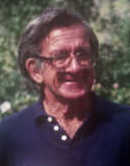Norman Hardie facts for kids
Quick facts for kids
Norman Hardie
QSO
|
|
|---|---|

Hardie in 1990
|
|
| Born |
Norman David Hardie
28 December 1924 Timaru, New Zealand
|
| Died | 31 October 2017 (aged 92) Christchurch, New Zealand
|
| Alma mater | Canterbury University College |
| Known for | Mountaineering |
| Spouse(s) |
Enid Hurst
(m. 1951) |
Norman David Hardie was a famous New Zealand climber. He was part of the team that first reached the top of Kangchenjunga in 1955. Kangchenjunga is the third-highest mountain in the world, standing at 8,586 meters (28,169 feet) tall.
Contents
Norman Hardie's Early Life
Norman Hardie was born in Timaru, New Zealand, in 1924. He left school early and spent time hunting deer. This helped him learn about the outdoors.
In 1943, he started studying civil engineering at Canterbury University College. He kept hunting to pay for his studies. During this time, he became very interested in tramping (which is what New Zealanders call hiking) and mountaineering.
After graduating in 1947, he worked on a hydroelectricity scheme at Lake Pukaki. He met the famous climber Edmund Hillary in 1948 during a difficult mountain rescue. In 1950, Hardie moved to England and married Enid Hurst in 1951. He worked there as an engineer for five years.
Mountaineering Adventures
While living in London, Norman Hardie met other climbers from New Zealand. After Edmund Hillary successfully climbed Mount Everest, the New Zealand Alpine Club planned an expedition to Nepal in 1954.
Mapping the Himalayas
Hardie's job on this trip was to survey and map routes up to Makalu. Makalu is the fifth-highest mountain in the world. During this expedition, he became good friends with Charles Evans. Evans later invited Hardie to join an expedition to climb Kangchenjunga.
Kangchenjunga was the third-highest mountain in the world. At that time, it was also the highest mountain that no one had ever climbed.
First Ascent of Kangchenjunga
A team of nine climbers, including Hardie, set out on this important mission. Hardie used his engineering skills to create a better oxygen system for the climbers. He was also made the deputy leader of the team. He helped train other climbers, John Angelo Jackson and Joe Brown, in how to use special climbing equipment called crampons.
The team spent two months on the mountain. They set up camps at different heights with the help of 300 porters and 40 Sherpas. On May 25, 1955, George Band and Joe Brown reached the summit. Norman Hardie and Tony Streather reached the top the very next day. Climbing Kangchenjunga was much harder than climbing Mount Everest. No one climbed Kangchenjunga again for another 22 years.
After this amazing climb, Hardie spent several months traveling with three Sherpas. Later, he and his wife mapped areas of the Himalayas that had never been explored before. In 1957, Hardie wrote a book about his adventures called In Highest Nepal.
He also joined Edmund Hillary on another trip to the Himalayas in 1960–61.
Later Life and Legacy
Norman Hardie was a board member of Edmund Hillary's Himalayan Trust for 22 years. He visited the Himalayas 14 times. He also traveled to Antarctica three times, even leading the team at Scott Base.
In 1992, he received the Queen's Service Order for his community work. He published his life story, On My Own Two Feet, in 2006.
Norman Hardie lived in Christchurch, New Zealand. He was one of the speakers at Edmund Hillary's state funeral in 2008. The New Zealand Alpine Club later decided to make a film about Hardie's climb of Kangchenjunga. Norman Hardie passed away in Christchurch on October 31, 2017.

